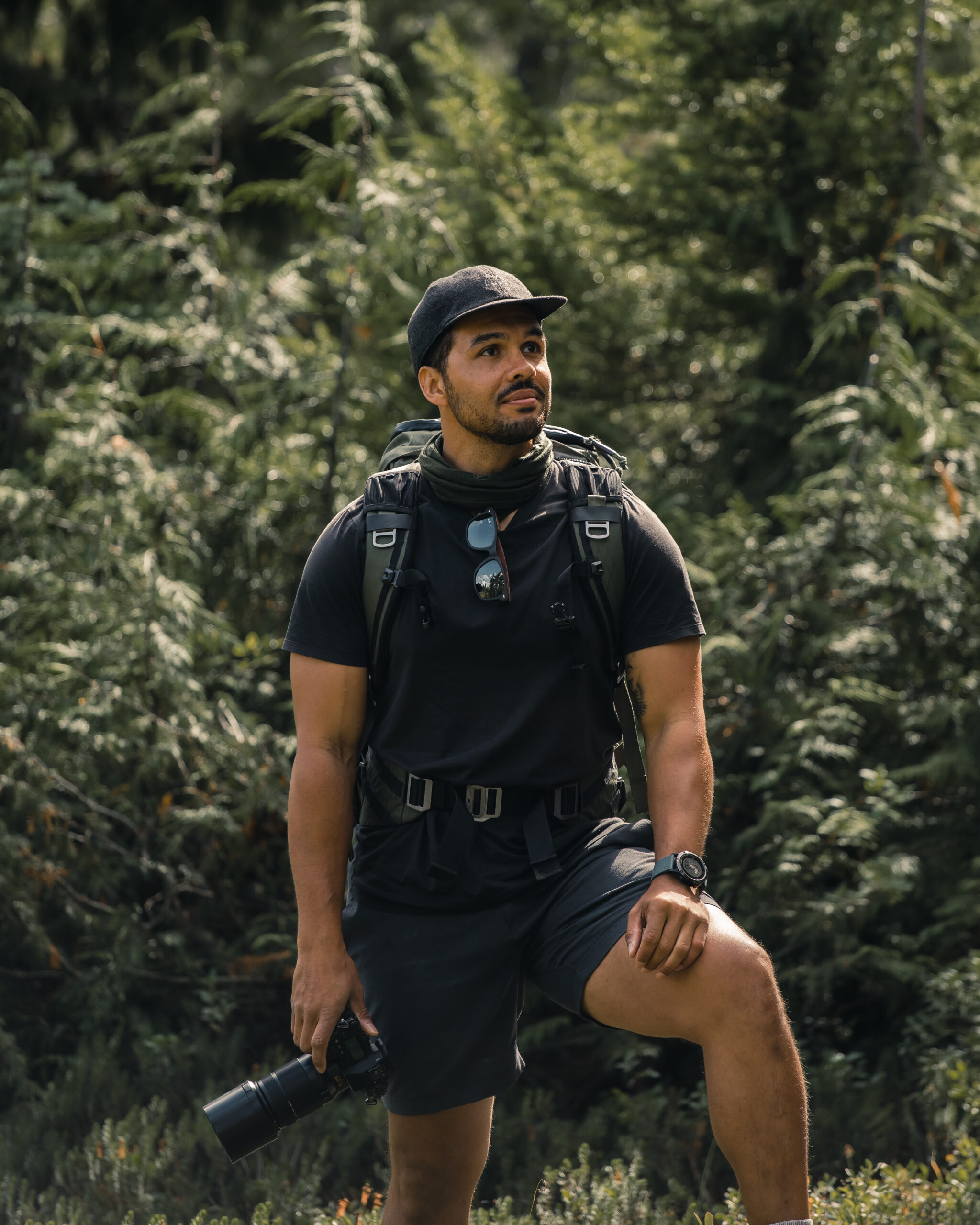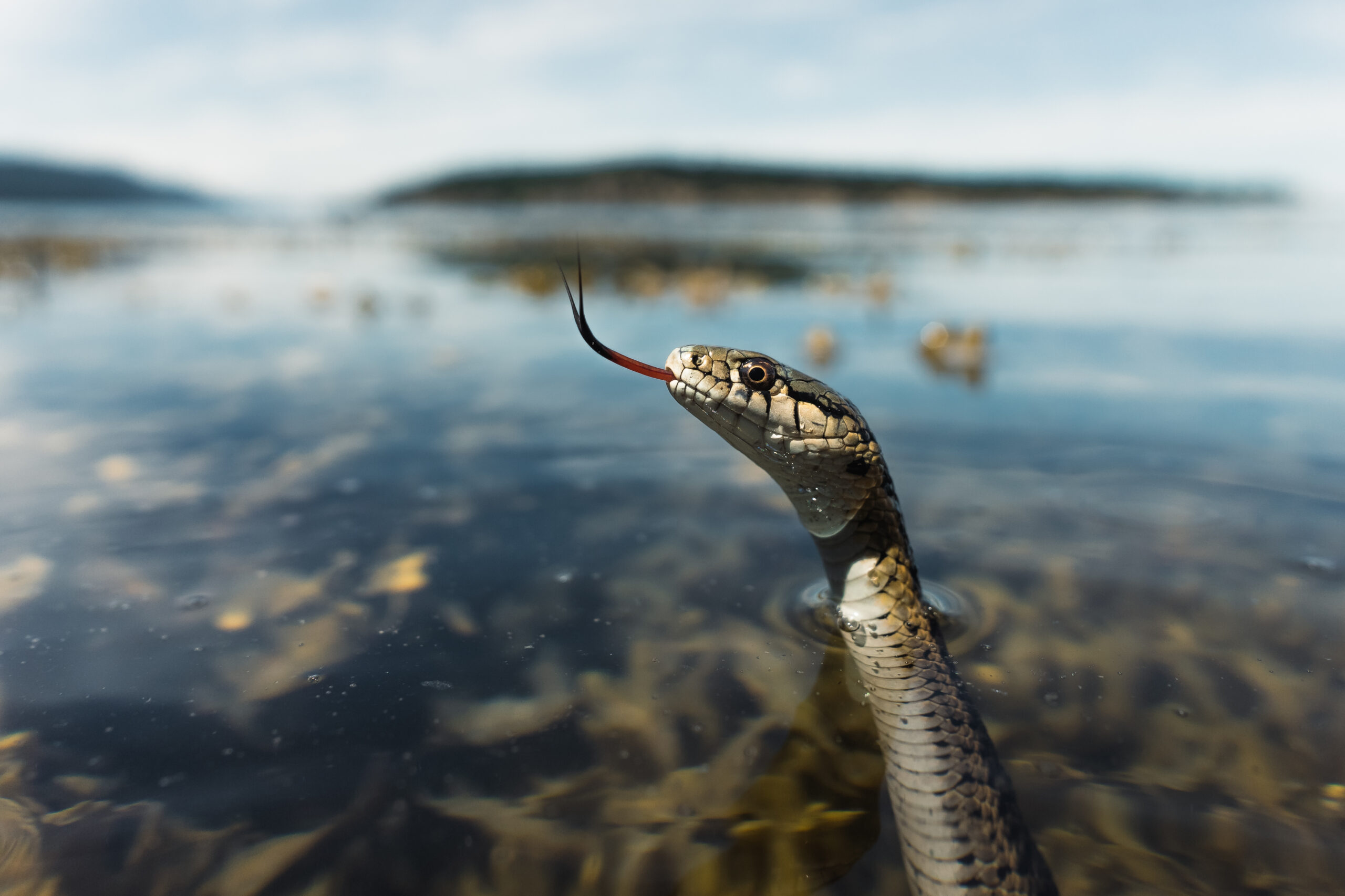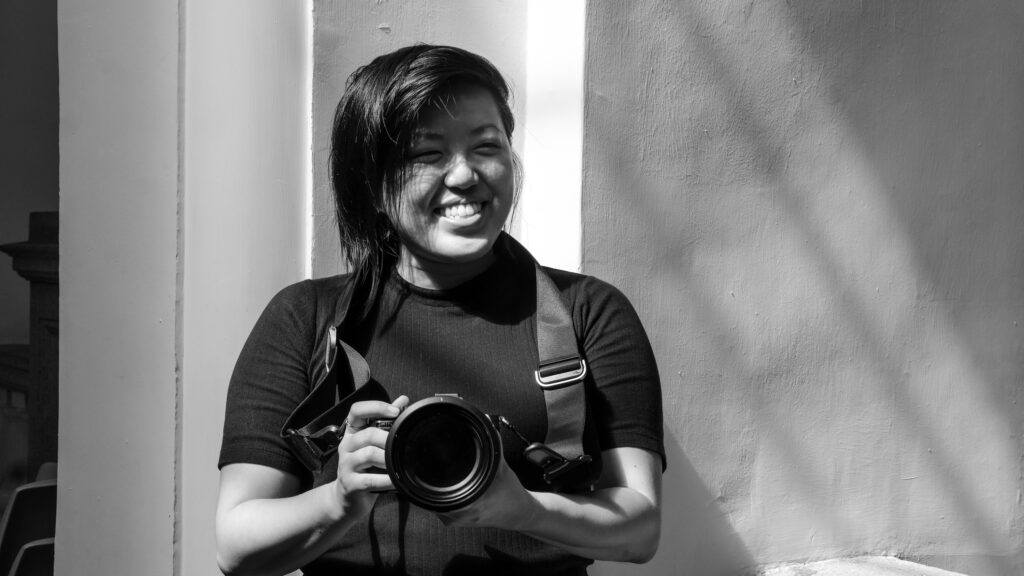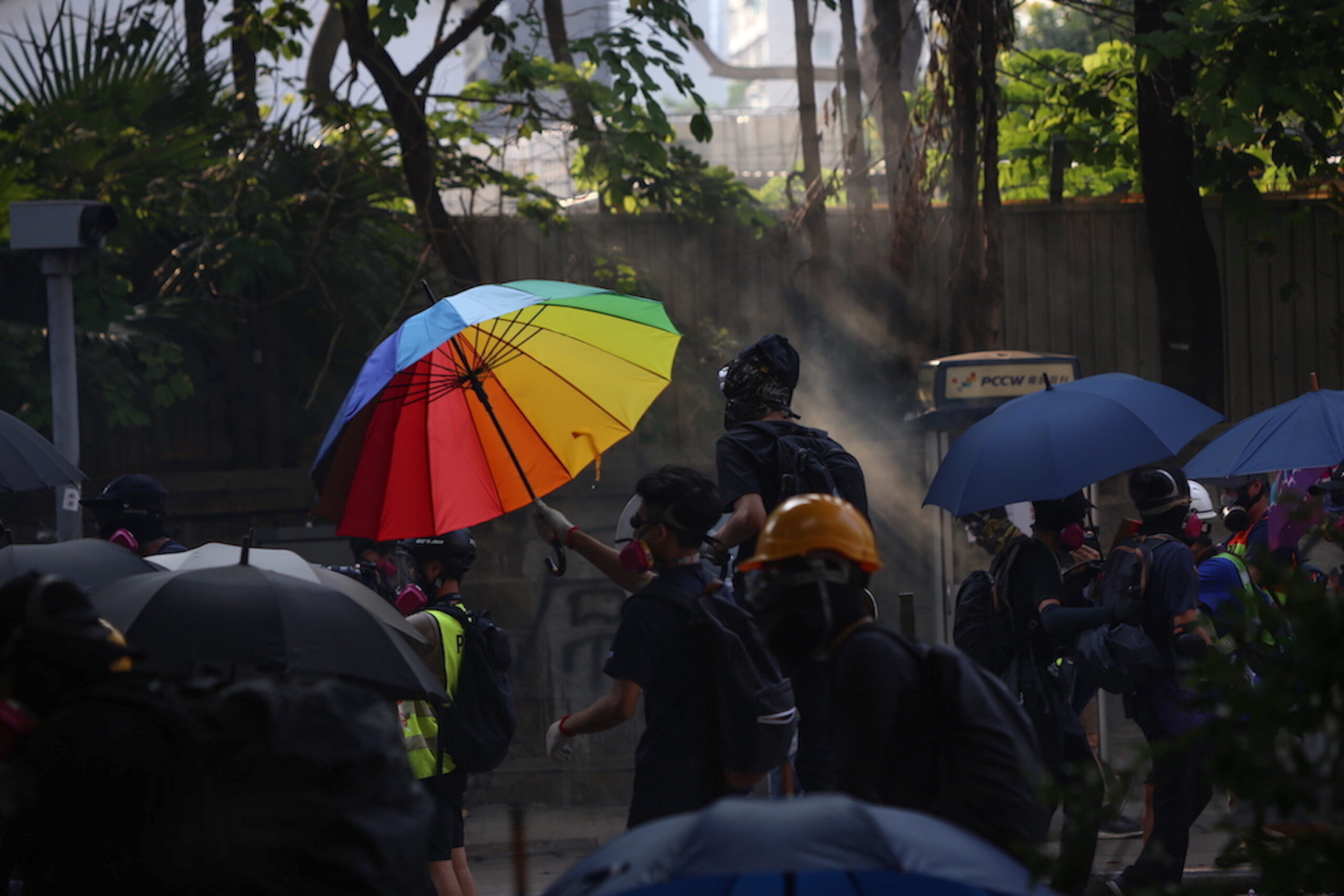
In a Nova Scotia research lab, the last hope for an ancient fish species
Racing against time, dwindling habitat and warming waters, scientists are trying to give this little-known...
Ryan Wilkes and Katherine Cheng both found themselves behind the lens as photojournalists in somewhat unexpected ways.
In 2019, Ryan was about to enter the world of research as his PhD in biomedical engineering came to a close in New Zealand, when he realized that picking up a camera would help scientists have a better impact on the world. And working deep in the nonprofit sector, Katherine was visiting her family in Hong Kong when she watched tensions rise from a coffee shop that same year — and decided to document it.
Fast-forward to 2022, when they were both selected for The Narwhal’s photojournalism fellowship, designed to support emerging photographers who are Black, Indigenous or people of colour.
The opportunity was created in partnership with Room Up Front — made possible by The Reader’s Digest Foundation and the generosity of our readers — to change the dominant whiteness of Canadian media and photojournalism. The Narwhal often tells stories about resource extraction, environmental racism and degradation that disproportionately affect racialized communities. We wanted to ensure that these stories were also being told by racialized journalists.
Want a little teaser on how Ryan and Katherine are changing the coverage of the natural world in Canada? Ryan’s working on a cool project on the essence of the natural world in sound, and how one composer is advocating to preserve earth’s last remaining quiet spaces. And Katherine is hoping that we don’t look at proposed highways in Ontario just from a bird’s eye view, but zoom in on how development projects affect the province’s natural world and communities on the ground.
Here are the two fellows on what stories compel them and what turned each of them into a photojournalist. (Just look slightly to the left, keep your chin up, read what Ryan and Katherine have to say — and smile!)

What stories are you most excited to cover? And why?
If you imagine a Venn diagram with four circles labeled “traditionally underrepresented,” “science,” “conservation” and “adventure,” the region where they all intersect is the sweet spot for me. I’m still very excited to cover stories that hit two or three of these themes, but I think having all of them would be really special.
Good science is vital for conservation initiatives because it brings hard evidence to the table to present to community members and policy makers. And I prefer covering a story with a bit of adventure because I am addicted to type 2 fun. I think that challenging situations in nature foster the best stories. Also, as a Black person, I have fought hard to be seen, heard and appreciated in athletics, academics and the arts — and I know how difficult and exhausting it can be. I want to be a vehicle for stories from traditionally underrepresented voices.
Other themes that I like to explore (I know, this Venn diagram is getting hectic) are wildlife and the arts. At the end of the day, when I look back on any story that I have enjoyed writing, producing, directing or shooting, it’s all about the people.
What does good journalism look like to you?
Good journalism is ethical and doesn’t cut corners. Good journalists go the extra mile to understand and explain the complexities and nuances of the relationships being discussed. They are honest with themselves about their own limitations and biases. Good journalism is a vehicle, with the subjects and their stories at the steering wheel.

You went from pursuing a PhD in biomedical engineering to photography. What inspired the change?
Making films and photographs is just a lot more fun. I love scientific research, but a lot of the other things that come with being an academic didn’t align with the kind of life I wanted to live. By the end of my PhD, I was freelancing as a videographer and photographer and was working on my first documentary. When I finished my degree, I knew that I could make a bigger impact in the world by helping scientists communicate their research, rather than doing more of my own research. Sometimes people ask me if I feel like I wasted five years of my life on my PhD. The answer is always an enthusiastic, “No way!”
It was incredibly difficult, but I don’t think that I would change a thing. Without it, I may have never picked up my first camera (shoutout to the GoPro Hero 4).
What was the last place you travelled to for a shoot that captivated you the most? Why?
I was recently on a documentary shoot in Greenland and the scale of the place is absolutely mind-boggling. It’s hard to give viewers a sense of scale when the iceberg in front of you is ten stories tall, and you don’t really have anything to put in your frame for comparison’s sake except the odd sea bird. We flew over a glacier for 60 kilometres, and the ice still stretched as far the eye could see. It’s vast, rugged and awfully humbling to be in a landscape like that. The tourism infrastructure is expanding rapidly, and I can’t help but wonder what the future looks like for the Greenlandic people. I would love the opportunity to return for a longer-term project one day.

What stories are you most excited to cover? And why?
Whenever possible, I gravitate towards covering stories about people of the global majority that have traditionally been overlooked or misconstrued, both as a topic and how they’re portrayed. We are all born from our own stories, and I see it as an opportunity to correct the past status quo. I’m most excited when I reach the end of a story and discover something new, or have my own perspective challenged.
Responsible climate stories are also an area that I feel urgently needs more attention and resources, as the warnings have been ringing for decades. How these stories are conveyed shapes how people understand what’s at stake and what’s possible — especially as we can increasingly see the deadly and inequitable impacts that climate change is having around the world. I believe that there is growing attention and complexity on how climate is covered, and I hope to be able to contribute to more of these stories.
Why is photojournalism so important to you?
I believe that the power of photojournalism comes from its ability to freeze a moment in time — capturing stories in a way that transcends language barriers. Single photographs can often last throughout history, becoming symbolic representations of entire movements in a way that the written or video form might not be able to capture so succinctly. As a photographer, the privilege to talk with diverse groups and have people open up to me is not something that I take lightly, and I feel fortunate for the opportunity to listen.

You’ve done some important work covering the protests in Hong Kong. What was that like?
Hong Kong was where I made my switch to journalism, and it fundamentally altered my trajectory as both a photographer and overall individual.
I had kind of stumbled upon it, at the height of what was happening in 2019. I remember looking out from this cafe at the first protest I had attended to see what was happening. We were in front of a police station and things got a bit tense, so I ended up taking some time to grab some coffee and catch my breath. And then I saw, I guess, one moment of special tension breaking out, like tear gas, pepper spray, molotov cocktails and that whole mix. I captured one moment that really struck me, being able to freeze what I saw in my mind — capturing something that I felt was historic, because I knew things were going to be washed away really quickly.
That propelled me to go out every day and shoot as much as I could.
What’s a guilty pleasure you’ve indulged in over the past year?
I’ve been trying to find moments to intentionally slow down, and spending time in a hammock with a good book has been one way that I’ve found that joy. It amazes me what you can see unfold in your own backyard, from hummingbirds to the seasonal changes, if you just take the time to sit and observe.
What book did you last read in a hammock?
On Earth We’re Briefly Gorgeous by Ocean Vuong, written in the form of letters from a Vietnamese-American son to his mother. It was a heartbreaking and tender depiction of a migrant family, and how their experiences are felt throughout generations.
Get the inside scoop on The Narwhal’s environment and climate reporting by signing up for our free newsletter. On March 17, federal Conservative Leader Pierre Poilievre...
Continue reading
Racing against time, dwindling habitat and warming waters, scientists are trying to give this little-known...

From investigative reporting to stunning photography, we’ve been recognized with four 2024 CAJ Awards nods...

The Narwhal is expanding its reach on video platforms like YouTube and TikTok. First up?...
